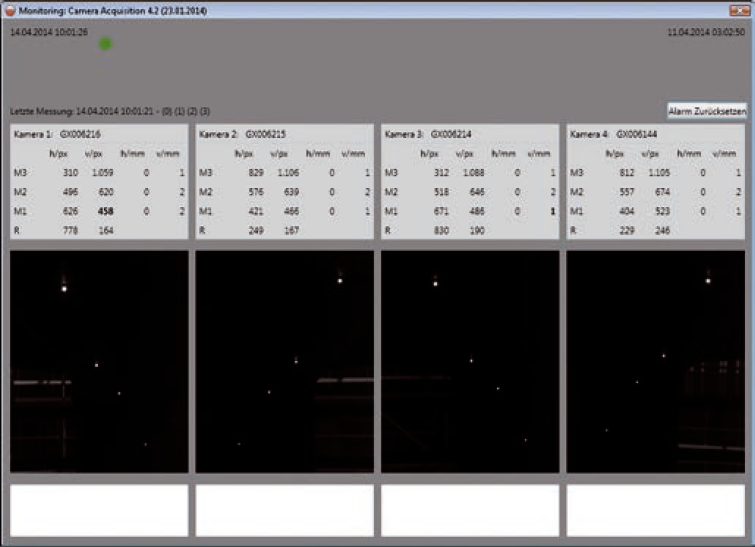

Remapping an image – use filter the UndistortImage filter to remove distortions from an input image.The result can be saved to a file for later use. Preparing a spatial map – the CreateUndistortionMap filter uses the camera matrix toĬompute a spatial map.To find a camera matrix the CalibrateCamera filter can be used. (camera matrix) using the found 3D object points and theirs Finding camera parameters – calculating camera distortion coefficients.Filter AnnotateGridPointsĬomputes a difference in the position of the grid points between real images Calibration using custom grids – to calibrate camera.The filter DetectChessboardGrid is prepared to extract points from such grids. Quality of the calibration depends on the calibration grid. Calibration using chessboards – this method requires to useĪ special calibration grid that can be bought or printed.Gathering images – the most important step is to gather images that will be used.
CAMERA LENS DISTORTION CALIBRATION MANUAL
The manual process of computing a lens distortion model consists of the following steps: Camera calibration example using a custom grid.Camera calibration example using chessboards (Advanced).Camera calibration example using chessboards with Calibration GUI.This kind of deformations is not covered in this document, but it can be fixed using basic image processing filters.Īdaptive Vision Studio offers a convenient way to create lens undistortion map using a GUI for chessboard-based calibration.Įxamples which contains more detailed step-by-step computation of a undistortion map (without use of the graphical tool): Note: The lens imperfections also introduce the vignette effect which results in darkening of the image pixels with the distance to the center of the lens. The central area in the image usually has little distortion, and the effect becomes stronger toward the borders of the image. The effect is that straight lines in reality are not reproduced as such in the recorded image. It is common for low-cost wide-angle lenses to introduce radial (barrel) distortion. This unwanted distortions are introduced by imperfections of camera lenses. Other are caused by the physical shape of the object under inspection.Īdaptive Vision Studio provides tools for dealing with several different deformation types. Some deformations result from physical imperfection of the used optics, The purpose of remapping of an image is to recover the image from before deformation. It is veryįast, because it only translates pixels by precomputed vectors. Process of transforming an input image to an image without distortion is called remapping. The type SpatialMap is a map of image locations and their corresponding positions after removal of distortion. This process is performed once and the model is stored in the SpatialMap type.

Type SpatialMapĬomputation of the deformation model is a very complex process and can take significant time. Removing lens distortion using camera calibration filters.

In the case of 2D vision it is necessary for performing reliable measurements. It is often required both in 2D and 3D applications. Camera Calibration Camera Calibration IntroductionĬamera calibration is a process of creating an image deformation model, which can be used to recover an undeformed image.Īdaptive Vision Studio makes it possible to model lens distortions as well as perspective, cylindrical and spherical transformations. It can be resolved using just a single image of the template. To facilitate the solution, this metric technique uses the same calibration template that is subsequently used for the calibration process. This method computes several camera lens distortion models outside the camera calibration process under stable conditions, independently of the computed lens distortion model and its parameters. Metric Lens Distortion Calibration (MLDC) However, the result of the calibration process can also be unstable, depending on the model and the number of parameters used. Others isolate lens distortion calibration without using a template, based on the deformation of straight lines or circles in an image. Some compute lens distortion parameters in the camera calibration process itself, together with the intrinsic and extrinsic parameters. Various calibration models exist which can be computed by different techniques. Calibration of camera lens distortion is crucial to obtaining maximum camera performance.


 0 kommentar(er)
0 kommentar(er)
